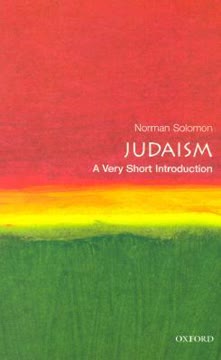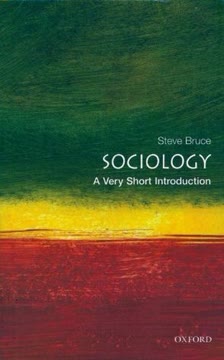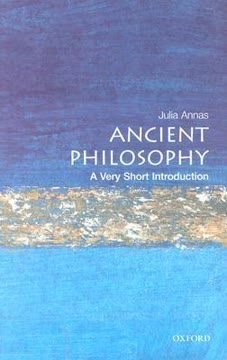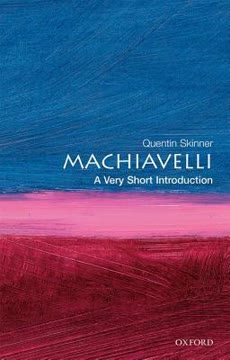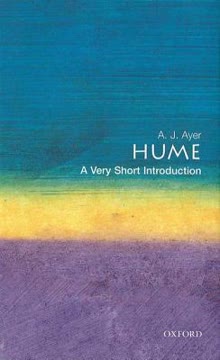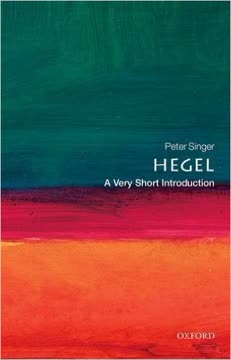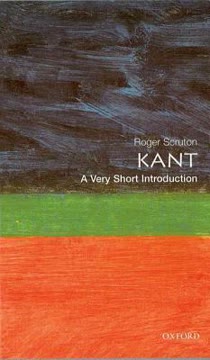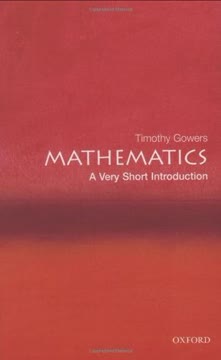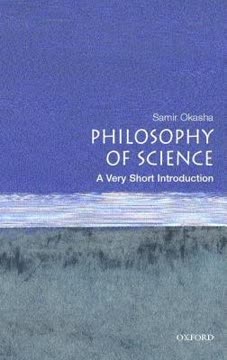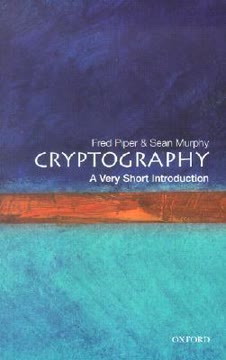つの重要なポイント
1. コーラン:イスラムの中心的な神聖なテキスト
宗教の最も神聖なテキストであり、文化の最も権威あるテキストはコーランである。
イスラムの聖典。 コーランはイスラムの中心的な宗教テキストであり、ムスリムはこれを神(アッラー)の言葉が預言者ムハンマドに天使ガブリエルを通じて啓示されたものと信じている。コーランは、宗教的な実践から道徳的な行動に至るまで、ムスリムの生活のあらゆる側面における究極の指針となっている。
- コーランは114の章(スーラ)に分かれており、長さや内容は様々である。
- コーランの言語はアラビア語であり、最も完璧な形の言語と見なされている。
- ムスリムはコーランが神の意志の最終的かつ完全な啓示であると信じている。
文化的権威。 宗教的な意義を超えて、コーランはイスラム文化における最も権威あるテキストでもある。コーランは1400年以上にわたり、イスラム法、倫理、芸術、文学を形成してきた。コーランの影響は、個人の行動から社会的・政治的構造に至るまで、ムスリムの生活のあらゆる側面に及んでいる。
- それはイスラム法(シャリーア)の基礎である。
- イスラム芸術や書道のインスピレーションの源でもある。
- それは民族や文化的背景に関係なく、世界中のムスリムにとっての統一の力となっている。
世界的影響。 コーランの影響はムスリムの世界に限られない。コーランは世界の歴史、文化、政治に深い影響を与えてきた。イスラムの広がりとイスラム文明の興隆は、コーランの教えと密接に関連している。
- イスラムは世界で二番目に大きな宗教であり、10億人以上の信者を持つ。
- コーランは多くの言語に翻訳され、そのメッセージは世界中の人々にアクセス可能である。
- コーランは宗教的および世俗的な文脈において、今なお議論と討論の源であり続けている。
2. 神の友と敵:明確な道徳的分断
確かに神の友には恐れも悲しみもない。
二つのグループ。 コーランは、神に従う者とそうでない者との明確な区別を示している。神の友は信仰、善行、敬虔さによって特徴づけられ、一方で神の敵は不信、悪行、偶像崇拝によって特徴づけられる。この分断は単なる宗教的な所属の問題ではなく、道徳的な立場の反映である。
- 神の友には楽園が約束されており、そこは永遠の幸福と報酬の場所である。
- 神の敵には地獄の火が脅かされており、そこは永遠の罰と苦しみの場所である。
- コーランは正しい道を選び、間違った道を避けることの重要性を強調している。
信仰と行動。 神の友となるための基準は単なる信仰にとどまらず、正しい行動も含まれる。コーランは、信仰と善行の両方が徳のある生活の不可欠な要素であることを強調している。
- 信者は神を唯一の存在として崇拝し、他のものを神に結びつけてはならない。
- 彼らは慈善を施し、困っている人を助け、定期的に祈るなどの善行を行わなければならない。
- 彼らは神の戒律に従い、敬虔で正しい生活を送るよう努めなければならない。
不信の結果。 コーランは不信と悪行の結果について警告している。神の導きを拒否し、罪深い行動に従事する者は神の敵と見なされ、来世で厳しい罰を受けることになる。
- 偶像崇拝、すなわち偽の神を崇拝することは重大な罪とされる。
- 偽善、すなわち信者を装いながら不信を抱くことも非難される。
- コーランは神との関係における誠実さと献身の重要性を強調している。
3. 指導と悔い改め:救済への道
言え:「真実はあなたの主から来ている。だから、信じたい者は信じ、信じたくない者は信じないがよい。」
神の導き。 コーランは、神がその使者や預言者を通じて人類に導きを提供していることを強調している。彼らは神のメッセージと教えをもたらす。これは静かで目に見えない力ではなく、神の意志の公然とした明示的なコミュニケーションである。
- ノア、アブラハム、モーセ、イエスなどの預言者は神の使者と見なされている。
- コーラン自体は神の導きの一形態であり、真実と知恵の書とされている。
- 神の導きは人々を正しい道、すなわち義と救済の道へと導くことを目的としている。
悔い改めと許し。 コーランはまた、正しい道から逸れた者にとって悔い改めの重要性を強調している。神は慈悲深く、思いやりのある存在であり、心から神に向かう者を許す意志があるとされている。
- 悔い改めは、自らの罪を認め、神からの許しを求め、行いを改めることを含む。
- 神の慈悲はすべてのものを包み込み、救済を求めるすべての者に希望を提供する。
- コーランは、神に向かい、許しを求めるのに遅すぎることはないと強調している。
人間の選択。 神が導きを提供し、許しを与える一方で、コーランは人間の選択が運命を決定する役割を認めている。人々は神を信じ、その導きに従うか、拒否して自らの欲望に従うかを自由に選ぶことができる。
- コーランは真実が神から来ていると述べており、人々は信じるか信じないかを自由に選ぶことができる。
- しかし、神の導きを拒否する者にはその選択の結果が警告されている。
- コーランは、来世で良い結果を得るためにこの世で正しい選択をすることの重要性を強調している。
4. 神の本質:宇宙的な力と親密な存在
我々は確かに人を創造した。そして我々は彼の魂が彼の内でささやくことを知っており、我々は彼の頸動脈よりも近い。
宇宙の主。 コーランは神をすべての存在の主、宇宙の創造者であり所有者として描写している。彼は天と地のすべてのものに対して絶対的な権威と力を持つ存在として描かれている。
- 神は生きている者、永遠の者であり、眠りやまどろみを知らない。
- 彼は六日間で天と地を創造し、彼の力によってそれらを維持している。
- 彼はすべての存在の究極の源であり、すべては彼に属している。
親密な知識。 その宇宙的な壮大さにもかかわらず、コーランは神が人間の事柄に対して親密な知識と関与を持っていることを強調している。彼は遠く離れた存在ではなく、各個人の思考や感情に至るまで、人間の生活のすべての詳細を知っている。
- 神は陸と海のすべてを知っており、葉が一枚落ちることさえ彼の知識なしにはない。
- 彼は各人の魂が内でささやくことを知っており、彼らの頸動脈よりも近い存在である。
- この神の親密な存在は、信者に畏敬と安らぎを与えることを目的としている。
曖昧な本質。 コーランは神を慈悲深く、復讐心を持ち、思いやりがあり、怒りを抱く存在として描写している。彼は悔い改めて神に向かう者に応じるが、彼の導きを拒否し、悪行に従事する者には罰を与える。
- 神の慈悲はすべてのものを包み込むとされるが、彼の正義もまた絶対的である。
- 彼は人々を迷わせることも導くこともでき、彼らの行動に対して責任を問う。
- 神の本質におけるこの曖昧さは、彼の絶対的な主権と力を思い起こさせるものである。
5. 現代の影響:普及と解釈
現代の状況は、かつてないほどの信者の間で聖典を普及させることを可能にしている。
アクセスの向上。 現代の技術はコーランの普及を革命的に変え、信者にとってこれまで以上にアクセスしやすくなった。印刷、音声録音、インターネットは、テキストの広範な入手可能性に寄与している。
- 印刷機は、手書きのコピーの数をはるかに超える大量のコーランを生産することを可能にした。
- 音声録音により、信者はいつでもどこでもコーランを朗読することができる。
- インターネットは、コーランのテキストをインターネット接続のある誰にでも提供する。
均質化と断片化。 現代性はコーランのアクセスを向上させた一方で、標準的なエジプト版が広く採用されることで均質化をもたらした。しかし、これはまた、非アラブのムスリムが自国語での翻訳を求める断片化も引き起こしている。
- エジプトの文化的な権威は、標準的なエジプト版のコーランの採用を促進した。
- コーランのアラビア語と非アラブのムスリムの地域言語との不一致は、翻訳の要求を生んだ。
- 一様性の欲求と理解可能性の必要性との間の緊張は、現代のイスラム世界における亀裂を生み出している。
現代の解釈。 現代の解説者たちは、科学、寛容、性別平等といった現代の価値観に照らしてコーランを解釈する課題に取り組んできた。これにより、現代の価値観と調和を図ろうとする解釈から、それを拒否する解釈まで、さまざまな解釈が生まれている。
- 一部の解説者は、コーランに科学的真実を読み込もうとし、他の者はこのアプローチを拒否している。
- 一部はコーランの寛容のメッセージを強調し、他の者はより制限的な箇所に焦点を当てている。
- 一部は男性優位を支持するように見える箇所を再解釈しようとし、他の者は伝統的な解釈を維持している。
6. 伝統的な慣習:聖なる対象としてのコーラン
トルコ人にとって、「コーランの上に座ることは、たとえ無意識であっても恐ろしい罪である」。
コーデックスの神聖さ。 伝統的なイスラムにおいて、コーランは単なる聖典ではなく、聖なる対象でもある。物理的な本自体は、神の言葉が含まれているという信念を反映して、非常に敬意を持って扱われる。
- ムスリムはコーランを腰の下や床に置かないように注意する。
- 読む際には特別なスタンドやクッションの上に置くことが多い。
- 儀式的な不浄の状態にあるときは触れないようにする。
儀式的な清浄。 儀式的な清浄の概念は、コーランの取り扱いにおいて重要な役割を果たす。ムスリムはコーランに触れたり朗読したりする前に、儀式的な清浄の状態であることが求められ、これは聖典が最大限の敬意を持って扱われるべきものであるという信念を反映している。
- 儀式的な不浄は、排尿や月経などのさまざまな身体的機能から生じることがある。
- ムスリムはコーランに触れる前に、清めの儀式(洗浄)を行わなければならない。
- 非ムスリムは一般的にコーランに触れることが許されず、彼らは常に不浄の状態にあると見なされる。
実践的な影響。 コーランの神聖さは、保管や取り扱いの方法、また摩耗した際の処分方法にさまざまな実践的な影響を与えている。これらの慣習は、コーランが神の言葉として持つ深い敬意を反映している。
- 摩耗したコーランのコピーは軽々しく捨てられることはなく、埋葬されるか、安全な場所に保管される。
- コーランの詩句を刻んだ硬貨は、神の言葉を含むものとして大切に扱われる。
- コーランの取り扱いは、その神聖な地位を反映した一連の規則や慣習によって管理されている。
7. テキストの伝達:忠実さと変異
伝達の忠実さは、テキストの非常に初期の異常が忠実に保存されている事実によって示される。
保存戦略。 書かれたテキストを重視する文化は、その正確な伝達を確保するためにさまざまな戦略を採用している。これらの戦略は、テキストの決定版を作成することから、写本作成者の勤勉さや口頭朗読の強化に依存することまで多岐にわたる。
- 「一度限り」の戦略は、テキストの永続的かつ決定的な具現化を作成することを含む。
- 「写本作成者」の戦略は、時間をかけて写
最終更新日:
FAQ
What's "The Koran: A Very Short Introduction" about?
- Overview of the Koran: The book provides a concise introduction to the Koran, exploring its role as the central religious text of Islam. It examines the Koran's historical context, its compilation, and its significance in Islamic culture.
- Scripture and Authority: It discusses the concept of scripture, comparing the Koran to other religious texts like the Bible and the Vedas, and highlights its unique status as the unaltered word of God in Islam.
- Cultural and Historical Context: The book delves into the historical and cultural backdrop of the Koran's revelation, including the life of the Prophet Muhammad and the early Islamic state.
- Modern Relevance: It also addresses the Koran's role in the modern world, including its interpretation, dissemination, and the challenges it faces in contemporary society.
Why should I read "The Koran: A Very Short Introduction"?
- Comprehensive Introduction: The book offers a thorough yet concise overview of the Koran, making it accessible to readers unfamiliar with Islamic texts.
- Cultural Insight: It provides valuable insights into the cultural and historical context of the Koran, enhancing understanding of its significance in Islamic civilization.
- Modern Relevance: The book discusses the Koran's role in the modern world, including its interpretation and the challenges it faces, making it relevant for contemporary readers.
- Comparative Analysis: It compares the Koran with other religious texts, offering a broader perspective on the concept of scripture and its role in different cultures.
What are the key takeaways of "The Koran: A Very Short Introduction"?
- Central Role of the Koran: The Koran is the central religious text of Islam, regarded as the literal word of God and a guide for all aspects of life.
- Historical Compilation: The Koran was compiled shortly after the death of the Prophet Muhammad, with the Caliph 'Uthman playing a key role in its standardization.
- Interpretation and Transmission: The book explores the various ways the Koran has been interpreted and transmitted over the centuries, highlighting the role of oral and written traditions.
- Modern Challenges: It addresses the challenges the Koran faces in the modern world, including issues of translation, interpretation, and its place in a globalized society.
How does Michael A. Cook define the concept of scripture in the book?
- Scripture as Authority: Cook defines scripture as a text that claims authority, often seen as sacred and central to a culture's identity.
- Preservation Methods: He discusses how societies preserve authoritative texts, whether through oral traditions or written forms, and the challenges involved.
- Comparative Perspective: The book compares the Koran with other scriptures like the Bible and the Vedas, highlighting differences in preservation and authority.
- Koran's Unique Status: Cook emphasizes the Koran's unique status as a scripture that is both oral and written, with a strong emphasis on its unaltered transmission.
What is the historical context of the Koran's revelation according to the book?
- Prophet Muhammad's Role: The Koran was revealed to the Prophet Muhammad in the early 7th century, primarily in Mecca and Medina, through the angel Gabriel.
- Arabian Peninsula: At the time, the Arabian Peninsula was a tribal society with a mix of polytheistic and monotheistic beliefs, setting the stage for Islam's emergence.
- Early Islamic State: Muhammad's success in Medina led to the establishment of an Islamic state, which played a crucial role in the Koran's dissemination and preservation.
- Cultural Interactions: The book also touches on the interactions between early Muslims and other religious communities, influencing the Koran's content and interpretation.
How was the Koran compiled and standardized?
- 'Uthman's Role: The Caliph 'Uthman is credited with standardizing the Koran around 650 CE, creating a single authoritative text to prevent divergent recitations.
- Collection Process: The compilation involved collecting various written and oral fragments of the Koran, with contributions from Muhammad's companions and scribes.
- Destruction of Variants: 'Uthman ordered the destruction of non-standardized versions to ensure uniformity, a move that solidified the Koran's text.
- Historical Challenges: Despite 'Uthman's efforts, some early variants persisted, and the book discusses the challenges of maintaining textual fidelity.
What are the main themes and messages of the Koran as discussed in the book?
- Monotheism and Guidance: The Koran emphasizes monotheism, the oneness of God, and provides guidance for moral and legal conduct.
- Prophetic Stories: It includes stories of past prophets, such as Moses and Jesus, to illustrate moral lessons and divine intervention.
- Judgment and Afterlife: The Koran frequently addresses themes of judgment, the afterlife, and the consequences of one's actions.
- Community and Law: It outlines the duties and responsibilities of the Muslim community, including social justice and legal principles.
How does the book address the interpretation of the Koran in the modern world?
- Modern Challenges: The book discusses the challenges of interpreting the Koran in a modern context, including issues of scientific compatibility and gender equality.
- Diverse Interpretations: It highlights the diversity of interpretations, from traditional to modernist and fundamentalist perspectives, reflecting varying cultural and historical influences.
- Role of Commentaries: Commentaries play a crucial role in interpreting the Koran, with modern commentators often grappling with contemporary values and issues.
- Global Influence: The book also examines the Koran's influence in a globalized world, including its role in shaping Islamic identity and its interaction with other cultures.
What are some of the linguistic and textual challenges of the Koran mentioned in the book?
- Obscure Words: The Koran contains words and phrases that remain obscure or ambiguous, posing challenges for translators and interpreters.
- Rhyme and Rhythm: Its use of rhyme and rhythm, while poetic, can complicate translation and interpretation, as these elements may not carry over into other languages.
- Variant Readings: The book discusses the existence of variant readings in early manuscripts, highlighting the complexities of textual transmission.
- Translation Issues: Translating the Koran is fraught with challenges, as it involves not only linguistic but also cultural and theological considerations.
How does the book compare the Koran to other religious texts?
- Scripture vs. Classic: The book distinguishes between scriptures like the Koran and classics like the Homeric epics, emphasizing the Koran's religious authority.
- Preservation and Authority: It compares the methods of preservation and the authority ascribed to the Koran with those of other texts like the Bible and the Vedas.
- Cultural Centrality: The Koran's centrality to Islamic culture is contrasted with the roles of other religious texts in their respective cultures.
- Unique Features: The book highlights the Koran's unique features, such as its compactness, late emergence, and status as the unaltered word of God.
What are the best quotes from "The Koran: A Very Short Introduction" and what do they mean?
- "The Koran is the Muslim scripture, that is to say the scripture of the followers of Islam." This quote underscores the Koran's central role in Islam, serving as the foundational text for the religion.
- "The Koran is as much a written text as the Bible." This highlights the Koran's dual nature as both an oral and written scripture, emphasizing its importance in Islamic tradition.
- "The Koran is a book sent down ‘to make everything clear’." This reflects the Koran's purpose as a guide for believers, providing clarity on moral, legal, and spiritual matters.
- "The Koran is the paradigmatic scripture, the word of God in the most immediate, uncompromising sense." This quote emphasizes the Koran's status as the ultimate scripture, embodying the direct word of God without human alteration.
How does the book address the dissemination of the Koran in the modern world?
- Printing and Technology: The book discusses the impact of modern technology, such as printing and the internet, on the dissemination of the Koran, making it more accessible than ever.
- Oral Tradition: Despite technological advances, the oral tradition of Koranic recitation remains strong, with modern media amplifying its reach.
- Educational Role: The Koran continues to play a central role in Islamic education, with many Muslims learning to recite and understand it from a young age.
- Cultural Homogenization: The book notes the trend towards cultural homogenization in Koranic recitation and interpretation, influenced by the global reach of modern media.
レビュー
**『コーラン:非常に短い入門書』**は賛否が分かれる評価を受けている。一部の読者は、コーランの歴史、言語学、解釈に関する簡潔でありながら包括的な内容を称賛しているが、他の読者は内容よりも技術的な詳細に焦点を当てている点を批判している。クックの学術的アプローチは評価されているものの、文章が乾燥していて時には理解しづらいと感じる読者もいる。この書籍はアラビア語やコーランの朗読に関する洞察が高く評価されているが、コーランの教えの明確な要約が欠けている点については批判されている。全体として、学術研究の出発点としては価値があると見なされているが、基本的な情報を求める一般読者には必ずしも理想的ではないとされている。
Very Short Introductions Series Series
